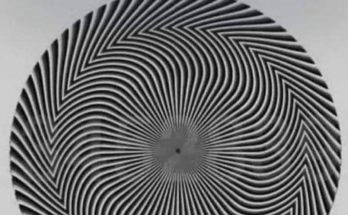🎩 The Birth of the Hourglass Ideal
In the 1910s, the world was shifting. Industrialization was booming, women were beginning to assert themselves socially, and fashion was evolving. Enter Charles Dana Gibson, an American illustrator whose pen gave rise to the “Gibson Girl”—a fictional character who embodied the ideal woman of the time: confident, educated, flirtatious, and impossibly curvy.
Camille Clifford, a Danish-born actress and model, became the living embodiment of this ideal. Her 18-inch waist, achieved through extreme corsetry, paired with a full bust and hips, created the exaggerated hourglass figure that defined an era. She didn’t just wear fashion—she became fashion.
🖋️ The Power of Illustration
Unlike today’s influencers, Clifford’s fame wasn’t built on selfies or reality TV. She was a muse. Gibson’s drawings of the Gibson Girl appeared in high-fashion magazines like Harper’s Weekly, shaping public perception of beauty. These weren’t just sketches—they were aspirational icons.
The Gibson Girl was more than a body type. She was poised, witty, and independent. She rode bicycles, played tennis, and read books. She was the first mainstream representation of a woman who could be both beautiful and bold. And Clifford, with her regal posture and theatrical flair, brought her to life.
👗 Corsets and Controversy
To achieve the Gibson Girl look, women wore corsets so tight they could barely breathe. Clifford’s waist was famously cinched to 18 inches—a feat that required discipline, discomfort, and a touch of madness. But it wasn’t just about vanity. The corset became a symbol of control, both societal and personal.
Women were expected to mold themselves—literally—to fit the ideal. And while the hourglass figure was celebrated, it also reinforced rigid gender roles. Beauty was power, yes, but it came at a cost. Clifford’s image was aspirational, but also unattainable for most.
🌍 A Global Influence
Clifford’s impact wasn’t confined to the West. The Gibson Girl aesthetic spread across continents, influencing fashion in Europe and beyond. Her look became a template for elegance: high necklines, sweeping skirts, and impossibly narrow waists. Even as cultures adapted the style to their own traditions, the hourglass remained a universal symbol of allure.
💪 Beauty Meets Power
What made Clifford revolutionary wasn’t just her shape—it was her presence. She didn’t smile coyly or shrink into the background. She stood tall, looked directly at the viewer, and owned her space. In a time when women were expected to be demure, she was magnetic.
The Gibson Girl was often depicted engaging in activities previously reserved for men—debating, horseback riding, even fencing. Clifford’s portrayal helped normalize the idea that women could be both ornamental and active participants in society.
📉 The Decline of the Hourglass
By the 1920s, the flapper era had arrived. Women rejected corsets, embraced androgyny, and celebrated freedom of movement. The hourglass gave way to the straight, boyish silhouette. Clifford’s reign ended, but her legacy endured.
Fashion is cyclical. The hourglass returned in the 1950s with Marilyn Monroe, again in the 1980s with Cindy Crawford, and today with figures like Beyoncé and Kim Kardashian. But Clifford was the prototype—the first to show that curves could command attention and respect.
🧠 The Psychology of the Hourglass
Why does the hourglass endure? Psychologists suggest it’s tied to evolutionary cues—wide hips signal fertility, a narrow waist suggests health. But it’s also cultural. The hourglass represents balance, symmetry, and strength. It’s a shape that feels both grounded and glamorous.
Clifford’s version of the hourglass wasn’t just physical—it was performative. She used posture, clothing, and attitude to amplify her presence. She understood that beauty wasn’t passive—it was a tool.
🎭 Camille Clifford: The Woman Behind the Waist
Despite her fame, Clifford was more than a mannequin. She was a performer, a thinker, and a strategist. She retired from modeling early, married into British aristocracy, and lived a quiet life. But her image never faded. She became a symbol—not just of beauty, but of transformation.
Her story is a reminder that behind every icon is a human being. Clifford endured the physical toll of corsetry, the pressure of public scrutiny, and the limitations of her era. Yet she carved out a legacy that still echoes today.
🔄 Beauty Standards: Then and Now
The Gibson Girl was the first mass-produced beauty ideal. Today, we have thousands—each shaped by media, culture, and commerce. But Clifford’s hourglass remains a touchstone. It’s been reinterpreted, challenged, and reclaimed. And in every iteration, it carries a whisper of her influence.
Modern beauty standards are more inclusive, more diverse, and more self-defined. But they still wrestle with the same questions: Who gets to decide what’s beautiful? And what does beauty say about power?
💬 Final Thought
Camille Clifford didn’t just change how women looked—she changed how they were seen. Her hourglass figure became a symbol of elegance, strength, and complexity. She showed that beauty could be commanding, that femininity could be fierce, and that a silhouette could shape a century.
In a world obsessed with transformation, Clifford reminds us that the most powerful change often begins with a single image. One that invites us to look again, think deeper, and see beyond the surface.


